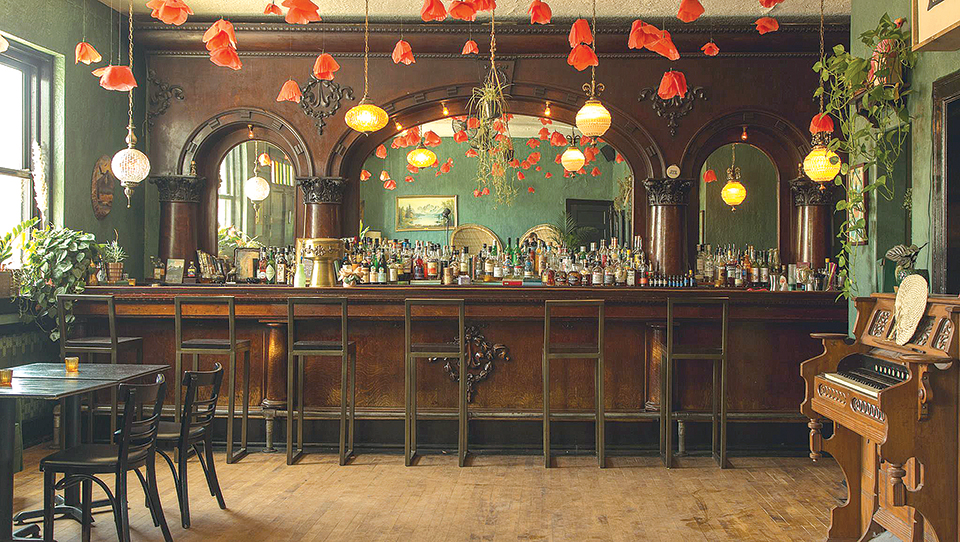
Train horns blare as BNSF engines cross the bridge above Washington Street, cyclists cruise the Platte River Trail, and the aroma of burgers and fries permeates the air. For more than 30 years, the McDonald’s restaurant at the corner of 45th and Washington has been the placeto go for an inexpensive meal and visit with friends. But the site was a lively meeting place in Globeville long before that.
In 1918, trains would rumble by, and the smell of the meat packing industry would mix with that of kielbasa, potica, sauerkraut, and, when it was legal, beer. Its clientele were Slovene immigrants.
Slovenes began arriving in Globeville in the late 1880s seeking jobs in the area’s industries: the Grant and Globe smelters, foundries, railroads, brickyards, and meat packing plants. Workers toiled 12 hours a day in dangerous conditions with extreme heat or cold, dust, and exposure to toxic fumes. There was little regard for workers’ welfare and no safety net if employees were injured or killed.
To offer financial security for themselves and their families, Slovenes formed Zapadna Slovanska Zveza, the Western Slavonic Association (WSA), an insurance organization. A member paid his dues each month, and, should he be injured or killed at his workplace, he would receive a proper burial, and his widow and children would be provided for financially. But the society offered so much more.

The lodge also sought to preserve the language, culture, and heritage of the mother country, Slovenia. Here, the immigrant felt welcome, comfortable speaking his native tongue, enjoying familiar ethnic dishes, and socializing with others from the old country. Slovenes could find information about jobs, places to stay, and where to meet other single people from home.
New arrivals were introduced to American customs like peanut butter and baseball, music, and dress (lose that curl in the middle of your forehead and that embroidered vest). Andrej Jakin would be given a nickname “Jackson” and taught helpful phrases like “may I have this dance?” to use at the lodge socials. Immigrants were cautioned to walk to and from work in a group, keep money tucked inside their boots, and avoid taverns on payday.
Most newcomers didn’t speak English and were wary of banks, but could get a loan from WSA, and send or receive money from the old country. Ethnic newspapers like WSA’s Voice were available and a good way to get news from Slovenia.
There was an activity for every demographic group: men, women, young people, children, religious and non-religious, native-language and English-speaking people. There were dances, concerts, picnics, plays, drill teams, baseball, and bowling leagues. The club was home to multiple Slovenian fraternal organizations and was called “The Slovenian Home.”
During the winter, guests gathered in the large hall to enjoy premier polka bands like Frankie Yancovik or Johnny Pecon. In the summer, members had access to an outdoor garden with tables.
After World War II, fraternal organizations would struggle as people had access to life and health insurance as well as other social activities. A younger generation wasn’t interested in their grandparents’ ethnic traditions.
Slovenes gradually assimilated into American life, moving up the economic ladder and away from the Globeville neighborhood. The Slovenian Home finally closed its doors on December 31, 1987, and sold its site to McDonald’s. The Western Slavonic Association is known as Western Fraternal Life and still offers insurance products, annuities, and fraternal activities at its location at 11265 Decatur Street in Westminster (wsalife.com).
So, stop for a burger and fries. Perhaps you can imagine strains of accordion music, dances, picnics, choirs, plays, and teams. And an immigrant community that took care of each other.
Mary Lou Egan is a fourth-generation Coloradan who loves history and is working on a history of Denver’s Globeville neighborhood. Her blog http://globevillestory.blogspot.com contains tidbits about the community. You can reach her at maryloudesign@comcast.net




Be the first to comment